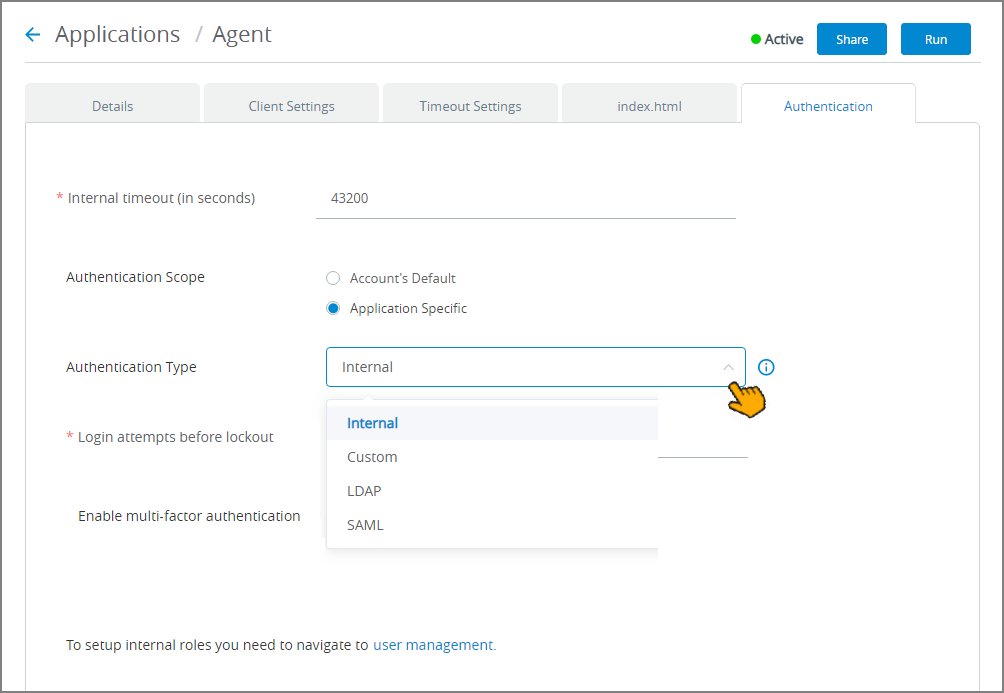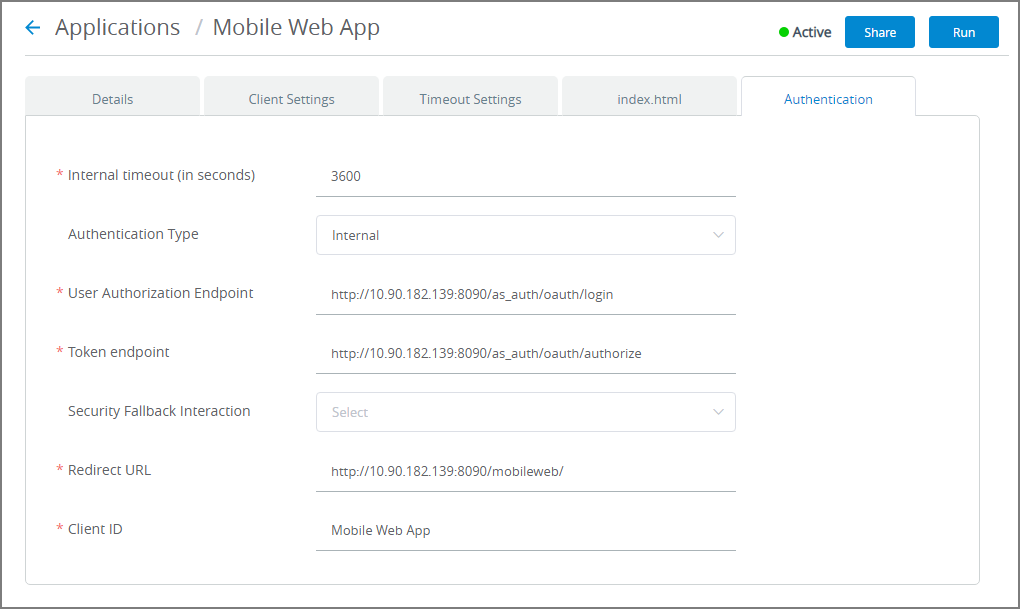Authentication Settings for Applications
You can set the authentication method that is used for a specific application from the Authentication panel on the relevant Application page.
Note
When platform-level Auth0 authentication is active, configuring the authentication settings for individual applications is not supported.
From the Applications page, click the Name link of the relevant Application. The settings tabs for the Application are displayed.
Click on the Authentication tab. The Authentication panel is displayed.
In the Internal timeout field, enter the length of time (in seconds) before the authentication procedure for this application will time out.
From the Authentication Type dropdown list, select the method that will be used to authenticate an application user.
The authentication methods that are available will vary according to the application channel type:
When you finish configuring the selected authentication type, click Save at the lower right of the page. The new settings will be saved for the application and will become effective immediately.
Note
You must save the changes you make in the Authentication Settings panel for them to be updated in the selected application.
Agent Authentication Methods
By default, the Authentication Scope selected for Agent and Agent (History Only) channel types is Account's Default. This selection uses the global authentication method configured for the account. To view current global settings, click on the link provided to the right of radio button.
 |
To change to another method, from the Authentication Scope radio buttons, select Application Specific. A dropdown list will be displayed with additional options:
 |
From the Authentication Type dropdown list, select the method that will be used to authenticate an application user:
Internal. Authentication is based on the unique username and password provided to each X‑Platform user and managed in a secure internal database.
Custom. Authentication is based on an external Authlink authorization server that operates in accordance with X‑Platform security requirements. For more details on configuring the Custom type, click here.
LDAP. Authentication is based on connection to an LDAP server. For details on configuring the LDAP type, click here.
SAML. Authentication is based on use of the SAML protocol. For more details about configuring SAML, click here.
Mobile Web and Web Self Service Authentication Methods
Choose from the following authentication methods:
Default (Internal). This is the default Authentication Type selected for Mobile Web and Web Self Service channel types.

Enter the related application values in the following fields:
Setting
Description
User Authorization Endpoint
The full URL path to the Login page for the authorization server. This read-only value is typically set by the System Admin upon account creation.
Token Endpoint
The full URL path to the authorization server (used to obtain an access token). This read-only value is typically set by the System Admin upon account creation.
Security Fallback Interaction
The name of the Flow that is presented to a user in the event that authorization to the application is not granted by the X‑Platform Server.
Redirect URL
The location to which to return after the access token is granted.
Client ID
Value to be provided by the 3rd party authorization server at the time of client registration.
OAUTH. To use this method, from the Authentication Type dropdown list, select OAUTH. For details on entering OAUTH settings for an application, click here.